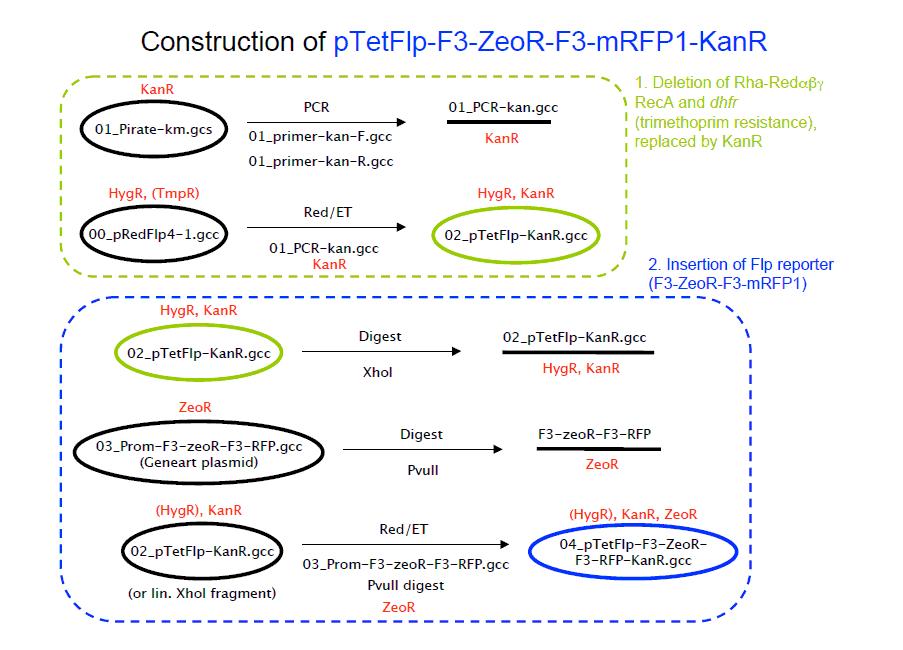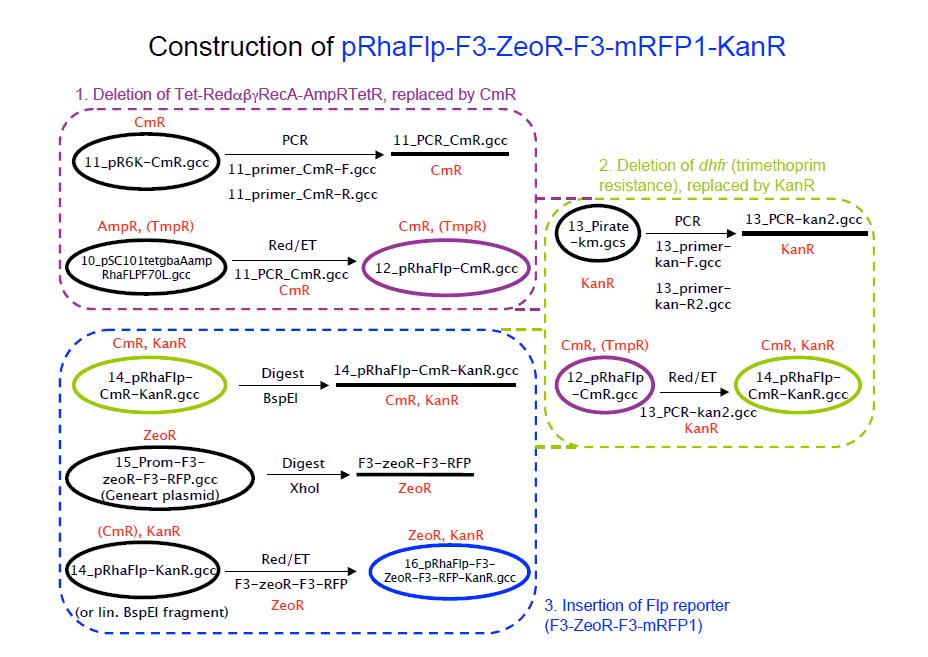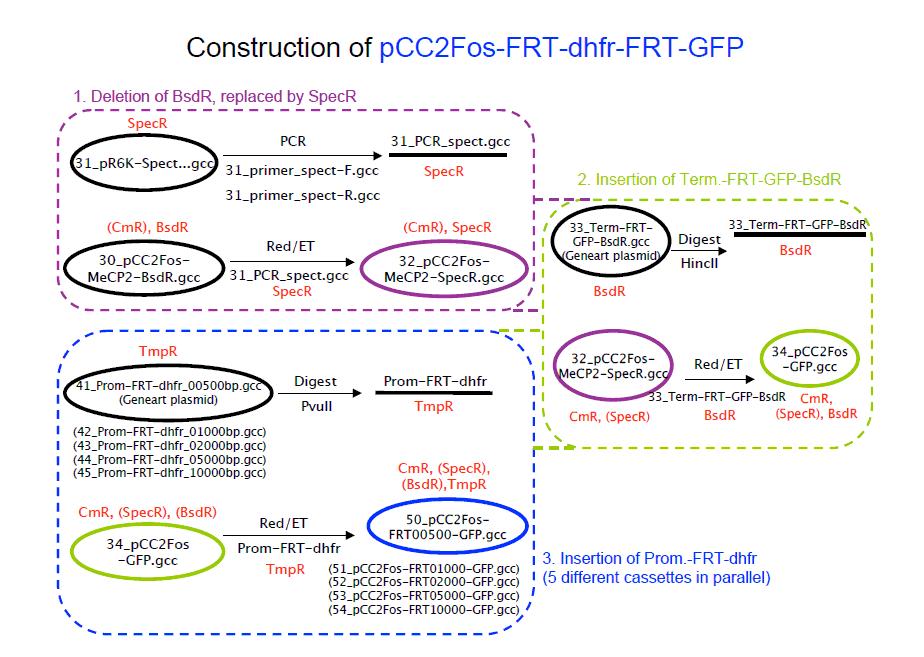Team:BIOTEC Dresden/Notebook Recombinase
From 2009.igem.org
| Line 1: | Line 1: | ||
{{:Team:BIOTEC_Dresden/NewTemplate}} | {{:Team:BIOTEC_Dresden/NewTemplate}} | ||
=== Recombinase Pops Measurement === | === Recombinase Pops Measurement === | ||
| + | |||
| + | The Flp recombinase recognizes FRT sites, and we designed our construct such that when the Flp(controlled by an inducible promoter) is expressed and the FRT sites are excised, our reporter is expressed. Expression of the reporter can be observed in a time dependent manner. Through this part of our project we aimed at characterizing the dependence of recombination efficiency of Flp recombinase on the FRT site distances. To achieve this the FRT sites were placed at varying distance on a fosmid backbone. A fosmid was selected because large distances of 2kb, 5kb and 10kb would be possible. | ||
| + | |||
| + | Characterizing the recombination efficiency and time required for reporter expression in relation to the FRT distances would enable us to design a Flp genetic timer, wherein we would be able to predict when the expression will occur in our system, if the distance is known. | ||
| + | |||
| + | PoPS (Polymerase per second) defines the processivity of Polymerases. The polymerases have different processivity in different processes, for instance it's higher during replication and lower during DNA repair. Synthetic Biology aims at standardizing every biological part and process. But the direct measurement of PoPS is difficult to achieve. This can however be done in an indirect manner by measuring the rate of protein synthesis and corelating this to PoPS. | ||
Revision as of 03:51, 22 October 2009
Recombinase Pops Measurement
The Flp recombinase recognizes FRT sites, and we designed our construct such that when the Flp(controlled by an inducible promoter) is expressed and the FRT sites are excised, our reporter is expressed. Expression of the reporter can be observed in a time dependent manner. Through this part of our project we aimed at characterizing the dependence of recombination efficiency of Flp recombinase on the FRT site distances. To achieve this the FRT sites were placed at varying distance on a fosmid backbone. A fosmid was selected because large distances of 2kb, 5kb and 10kb would be possible.
Characterizing the recombination efficiency and time required for reporter expression in relation to the FRT distances would enable us to design a Flp genetic timer, wherein we would be able to predict when the expression will occur in our system, if the distance is known.
PoPS (Polymerase per second) defines the processivity of Polymerases. The polymerases have different processivity in different processes, for instance it's higher during replication and lower during DNA repair. Synthetic Biology aims at standardizing every biological part and process. But the direct measurement of PoPS is difficult to achieve. This can however be done in an indirect manner by measuring the rate of protein synthesis and corelating this to PoPS.
 "
"







